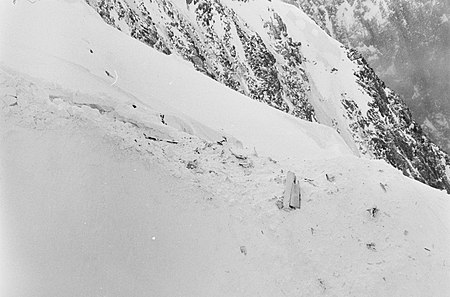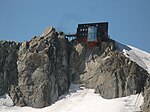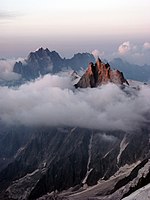Air India Flight 101
1966 in FranceAccidents and incidents involving the Boeing 707Air India accidents and incidentsAirliner accidents and incidents involving controlled flight into terrainAviation accidents and incidents in 1966 ... and 4 more
Aviation accidents and incidents in FranceEngvarB from July 2014January 1966 events in EuropeMont Blanc

Air India Flight 101 was a scheduled Air India passenger flight from Bombay to London, via Delhi, Beirut, and Geneva. On the morning of 24 January 1966 at 8:02 CET, on approach to Geneva, the Boeing 707 operating the flight accidentally flew into Mont Blanc in France, killing all 117 people on board. Among the victims was Dr. Homi Jehangir Bhabha, the founder and chairman of the Atomic Energy Commission of India.The crash occurred just a few hundred feet away from where an Air India Lockheed 749 Constellation operating Air India Flight 245 on a charter flight, had crashed in 1950.
Excerpt from the Wikipedia article Air India Flight 101 (License: CC BY-SA 3.0, Authors, Images).Air India Flight 101
The Grand Mulets, Bonneville
Geographical coordinates (GPS) Address Nearby Places Show on map
Geographical coordinates (GPS)
| Latitude | Longitude |
|---|---|
| N 45.877777777778 ° | E 6.8666666666667 ° |
Address
The Grand Mulets
The Grand Mulets
74400 Bonneville
Auvergne-Rhône-Alpes, France
Open on Google Maps









